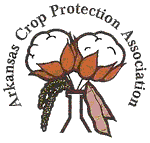Tristen Avent won the PhD student competition with a presentation titled Three-Year Impact of Single-Tank See & Spray™ Programs in Soybean. Targeted applications of herbicides provide the potential for producers to save input costs but pose a risk due to potentially missed weeds and increasing populations in subsequent production seasons. For the past three years, weed scientists with the University of Arkansas System Division of Agriculture have been working with a scaled See & Spray™ machine to determine the long-term impact of John Deere’s targeted spray technology on weed control in soybean. Treatments compared traditional broadcast applications to targeted applications at two detection sensitivity settings where both the postemergence and residual herbicides were applied through the See & Spray boom. All treatments followed a standard herbicide program with a preemergence application followed by early-postemergence (EPOST) and mid-postemergence (MPOST) applications of glufosinate. Plots did not change from one year to the next to evaluate the changes in weed populations over time, and in season counts of weeds included Palmer amaranth, morningglory species, prickly sida, and broadleaf signalgrass. In 2022, all treatments averaged 279 weeds acre-1 between the EPOST and MPOST timing. Targeted applications at the low detection sensitivity setting caused increasing numbers of weeds each subsequent year at the time of applications (263 to 1120 to 3870 weeds acre-1). Also, Palmer amaranth escapes increased for the low detection setting each year. In terms of savings, there are differences between targeted applications at the EPOST application timing for the high and low detection settings, with each providing 42% and 59% savings, respectively. By the MPOST application, savings were 52% and 51%, respectively. Overall, targeted applications with See & Spray could provide producers with herbicide savings. If utilizing the low detection setting, producers could experience negative impacts on weed seedbank management, subsequently increasing the risk for herbicide resistance.

 Michael Dodde and Maria Souza are First Place Winners in the Masters Student...
Michael Dodde and Maria Souza are First Place Winners in the Masters Student...